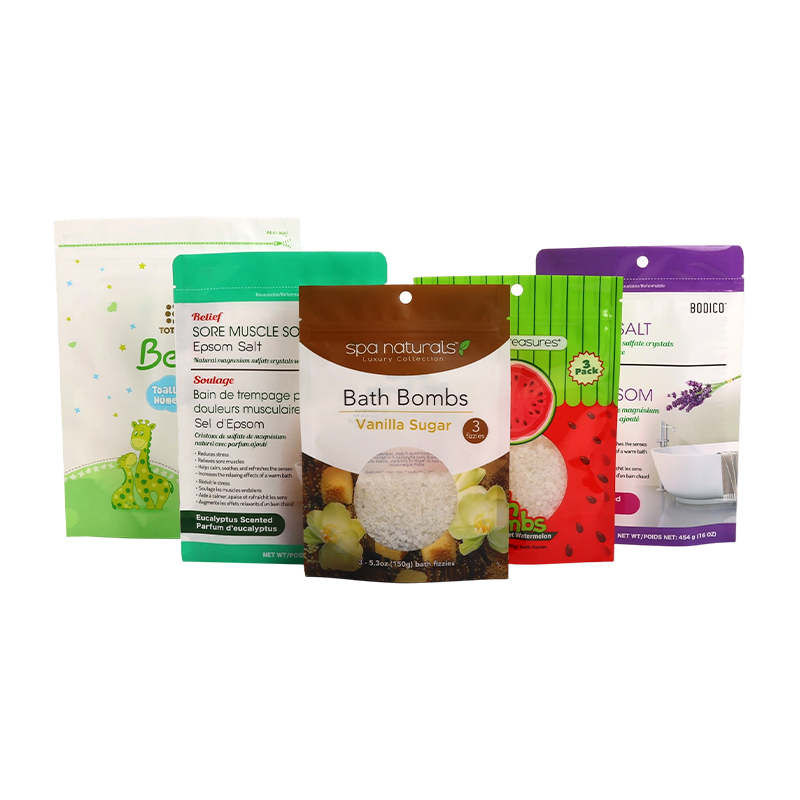2025-07-24
The packaging industry is continually evolving to meet the growing demands for convenience, sustainability, and product protection. Among the innovative solutions gaining prominence is the self-supporting zipper seal packaging bag—a versatile packaging format that combines durability, ease of use, and efficient storage. This style of packaging is rapidly becoming a across various sectors, offering brands and consumers a host of benefits that traditional packaging formats struggle to deliver.
What Is a Self-Supporting Zipper Seal Packaging Bag?
A self-supporting zipper seal packaging bag, often referred to as a stand-up zipper pouch, is a flexible packaging bag designed to stand upright on its own due to a gusseted bottom or reinforced base. These bags feature a resealable zipper closure that enables consumers to open and close the bag multiple times while maintaining product freshness and security.
This packaging style strikes balance between the flexibility of soft packaging and the convenience of rigid containers. It offers brands an opportunity to provide durable, space-efficient, and user-friendly packaging solutions that cater to the evolving lifestyle of consumers.
Material Composition and Construction
Typically, self-supporting zipper seal bags are made from multilayer laminated films, which may include polyethylene (PE), polypropylene (PP), polyester (PET), and sometimes aluminum or metallized layers for enhanced barrier protection. This combination ensures the bags are durable, resistant to punctures, and capable of protecting contents from moisture, oxygen, and external contaminants.
The gusset or bottom fold enables the bag to expand and create a stable base that supports standing upright. The resealable zipper is heat-sealed into the packaging, providing an airtight closure that preserves the freshness and quality of the product inside.
Key Advantages Driving Market Adoption
Space Efficiency and Shelf Presence: The self-supporting design allows the bags to stand upright on shelves or countertops, optimizing shelf space and improving visibility. This creates a strong retail presence and enhances brand recognition.

Resealability and Freshness: The zipper seal permits consumers to access the product multiple times without compromising freshness. This feature is particularly valuable for products consumed over several uses, such as snacks, pet foods, powders, and wet wipes.
Durability and Protection: Constructed with robust multilayer materials, these bags protect contents from physical damage, moisture loss, and contamination, ensuring the product maintains its integrity during shipping and storage.
Lightweight and Portable: Compared to rigid containers, these bags are lightweight and flexible, reducing shipping costs and offering portability for consumers who want convenient, on-the-go packaging.
Customizable Design: Brands can customize the size, shape, film thickness, and printing on self-supporting zipper bags to align with their marketing strategies and product requirements. The bags accommodate high-resolution graphics and various finishes, including matte, gloss, or soft-touch textures.
Industry Applications and Versatility
Self-supporting zipper seal packaging bags are widely adopted across numerous industries, showcasing their versatility:
Food and Beverage: Popular for packaging snacks, dried fruits, nuts, coffee, tea, spices, and pet food. The resealable zipper ensures prolonged freshness and ease of storage.
Personal Care and Cosmetics: Used for bath salts, powders, face masks, and other personal care products that benefit from moisture protection and resealability.
Household Products: Ideal for detergents, cleaning wipes, and other household consumables that require convenient dispensing and airtight storage.
Health and Wellness: Vitamins, supplements, and protein powders are commonly packaged in these bags for their ability to maintain product efficacy and freshness.
Sustainability Trends and Innovations
With growing consumer and regulatory focus on sustainability, manufacturers of self-supporting zipper seal bags are innovating to reduce environmental impact. Some key trends include:
Recyclable and Mono-material Structures: Development of packaging films that are easier to recycle without compromising barrier properties.
Use of Recycled Content: Incorporating post-consumer recycled (PCR) materials in bag production to lower carbon footprints.
Biodegradable Films: Experimentation with compostable or bio-based films to address plastic waste concerns.
Lightweighting: Reducing film thickness while maintaining strength to minimize material use and waste.